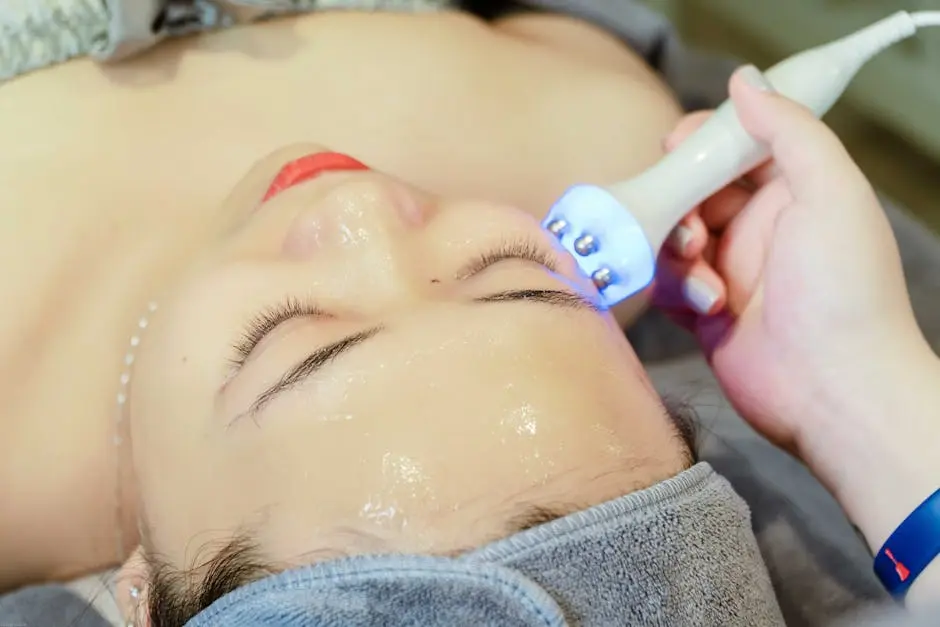LED light therapy is a fascinating treatment gaining popularity for its ability to improve skin health and appearance. But how does it really work? This blog will break down the science behind LED light therapy, its benefits, and what you can expect from a session.
Understanding LED Light Therapy
LED stands for Light Emitting Diode. This section will introduce the basics of LED technology and how it’s used in therapy.
LED light therapy harnesses the power of specific wavelengths of light to target various skin conditions. By emitting light in controlled doses, this technology helps stimulate cellular functions.
One of the most appealing aspects of LED therapy is its versatility. Not only is it used for cosmetic purposes, such as improving skin texture and luminosity, but it can also assist in healing and reducing inflammation.
The innovative nature of LED technology makes it an attractive option for people seeking non-invasive treatments. This approach eliminates the need for harsh chemicals or invasive procedures.
As we dive deeper into LED light therapy, you’ll discover how it can be a game-changer for maintaining a youthful glow and combating various skin issues.
How LED Light Penetrates the Skin
Explore how different wavelengths of light penetrate the skin layers and the effects they have on skin cells.
LED light therapy utilizes a range of wavelengths from red to blue light, each affecting the skin differently. Red light typically penetrates deeper layers, promoting collagen production and reducing wrinkles.
On the other hand, blue light is primarily known for its antibacterial properties and is effective in treating acne by targeting the bacteria that cause breakouts. This dual-action capability is one of the reasons many people turn to LED therapy.
The way these lights interact with our cells is remarkable. When light photons reach the skin, they are absorbed by responsive molecules in the skin cells, which can stimulate various processes such as tissue repair and regeneration.
This penetration not only enhances the aesthetic qualities of your skin but also reinforces overall skin health, making it a holistic approach to skincare.
Benefits of LED Light Therapy
Discuss various skin benefits such as reducing wrinkles, acne treatment, and promoting healing.
The benefits of LED light therapy extend far beyond mere surface appearance. Users often report a noticeable reduction in fine lines and wrinkles after just a few sessions, thanks to increased collagen production.
Another significant advantage is its efficiency in treating acne. The blue light targets and neutralizes the bacteria within pores, leading to clearer skin while minimizing potential scarring.
Moreover, LED therapy can enhance the skin’s healing process, providing relief from conditions like rosacea, eczema, and psoriasis. This makes it a favorite among those seeking a gentle yet effective solution.
Overall, incorporating LED light therapy into your skincare routine can lead to brighter, healthier skin. It’s an investment in your long-term skin health that many people find well worth it.
What to Expect During a Session
Learn about the typical experience during an LED light therapy session, including duration and sensations.
During an LED light therapy session, you can expect a comfortable and relaxing atmosphere. Sessions typically last between 20 to 60 minutes, depending on the specific treatment plan suited for your skin’s needs.
Many clients describe the sensation of LED light as warm and soothing, akin to standing in sunlight. Unlike some treatments, there’s no pain involved, which makes it a stress-free experience.
Prior to starting the session, a skincare specialist will assess your skin type and conditions, tailoring the light therapy to suit your individual needs. This personalized approach ensures optimal results.
After your session, it’s common to feel rejuvenated and energized, often accompanied by visible improvements in skin tone and texture soon after.
Are There Any Side Effects?
Review potential side effects and who should avoid this therapy for safety.
While LED light therapy is generally considered safe for all skin types, it’s essential to be aware of possible side effects. Some individuals may experience mild redness or irritation, but these effects typically subside swiftly.
As with any treatment, there are certain individuals who should exercise caution or consult a dermatologist before proceeding. For instance, those with light-sensitive conditions or certain medications may need to avoid LED light therapy.
It’s crucial to have a thorough pre-treatment consultation to assess any potential risks uniquely applicable to your situation. By doing so, you ensure that you reap the benefits without complications.
Ultimately, being informed about the possible effects allows you to appreciate the advantages while being prepared for any minor reactions.
Wrapping Up
LED light therapy offers a non-invasive solution to various skin concerns and promotes overall skin health. If you’re considering this treatment, understanding its mechanisms can help you make an informed decision.

